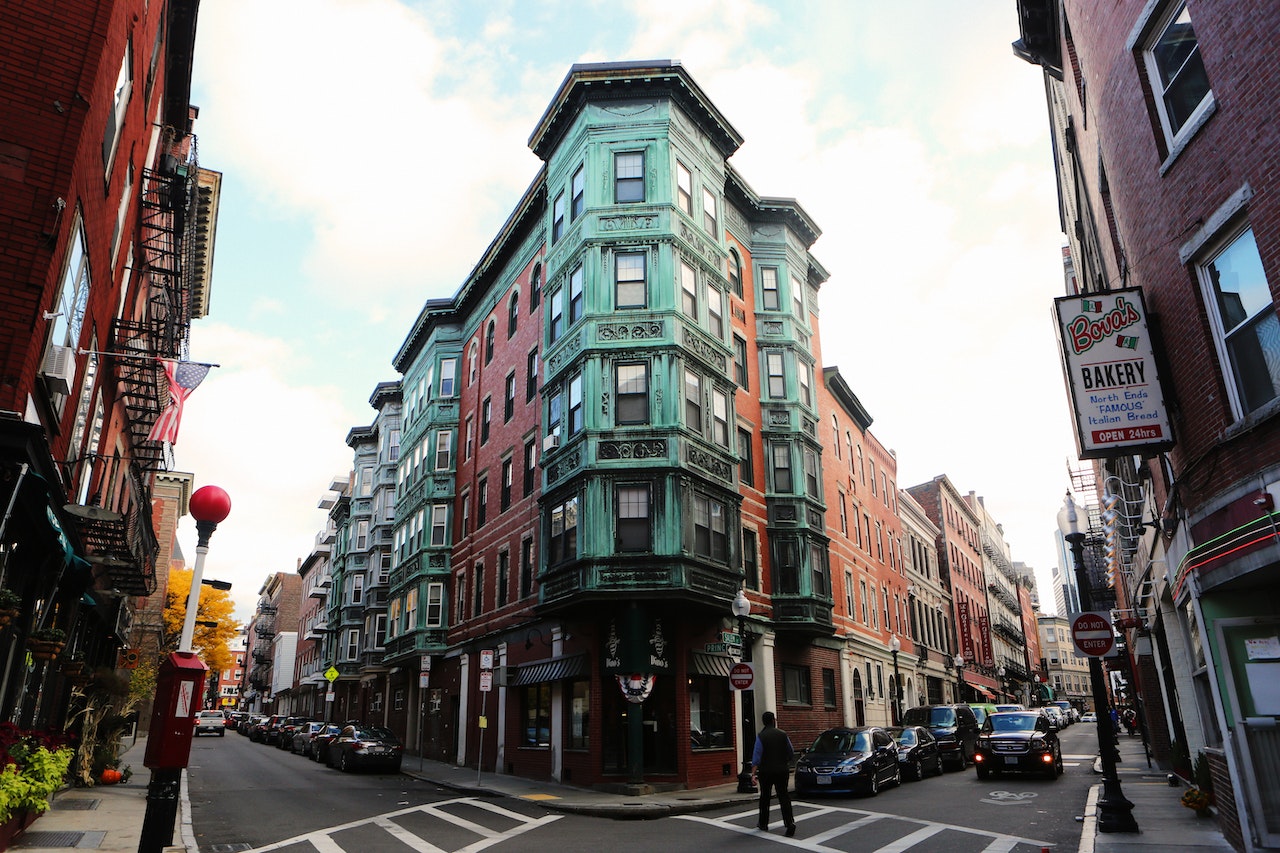The Relationship Between Architectural Design And Human Psychology - Aesthetics And Architecture
The relationship between architectural design and human psychology is a fascinating topic that has been explored by scholars and professionals in both fields. Architects and designers aim to create spaces that are not only functional but also visually pleasing, comfortable, and inviting.
Author:George EvansMar 22, 202340.1K Shares1M Views

The relationship between architectural design and human psychologyis a fascinating topic that has been explored by scholars and professionals in both fields.
Architects and designers aim to create spaces that are not only functional but also visually pleasing, comfortable, and inviting. However, the impact of design on human psychology is often overlooked, despite its significant role in shaping our emotions, behaviors, and overall well-being.
This article will delve into the relationship between architectural design and human psychology by exploring various aspects of design that affect our psychological well-being.
We will discuss how different design elements, such as lighting, color, texture, and spatial layout, influence our mood, cognition, and behavior. We will also examine the role of architecture in promoting social interaction, creativity, and productivity.
Finally, we will look at the implications of design on mental health and well-being, as well as the emerging trends in designing for mental wellness.
The Relationship Between Architectural Design And Human Psychology
On one hand, architecture can influence our mood, behavior, and well-being, and on the other hand, our psychological needs and preferences can shape the design of buildings and spaces.
Historically, architects and designers have recognized the importance of creating spaces that are not only functional but also aesthetically pleasing.
In ancient civilizations such as Greece and Rome, architecture was used to express cultural values and ideals, and to create spaces that promoted social interaction and civic engagement.
In the Renaissance, architecture was used to create grandiose and elaborate spaces that reflected the wealth and power of the ruling class.
Design Elements That Affect Human Psychology
Architecture and design have a significant impact on our psychology and behavior. Design elements such as lighting, color, texture, and spatial layout can affect our mood, behavior, and well-being. We will explore some of the key design elements that have been shown to influence human psychology.
Lighting
Lighting is one of the most important design elements that affect our psychological well-being. Natural light has been shown to positively impact our mood, reduce stress, and improve our sleep patterns.
Exposure to natural light helps regulate our circadian rhythms, which in turn affects our hormone production and physiological processes.
In contrast, artificial lighting, especially the blue light emitted from screens and electronic devices, can disrupt our sleep and increase stress levels. Therefore, it is important for designers to incorporate natural lighting into their designs as much as possible and to use artificial lighting that mimics natural light.
Color
Color is another design element that has a significant impact on human psychology. Different colors evoke different emotions and have different psychological effects.
For example, warm colors like red, orange, and yellow are associated with energy, excitement, and passion, while cool colors like blue, green, and purple are associated with calmness, relaxation, and peace.
Additionally, the intensity and saturation of a color can also affect our emotional response. For example, bright, bold colors can be stimulating and energizing, while muted, pastel colors can be calming and soothing.
Texture
The texture is another design element that can affect our psychological well-being. Different textures can evoke different emotions and create different moods.
For example, smooth, polished surfaces can create a sense of elegance and sophistication, while rough, textured surfaces can create a sense of ruggedness and durability.
Additionally, tactile textures, such as soft fabrics, can create a sense of comfort and coziness, while hard, industrial textures can create a sense of toughness and resilience.
Spatial Layout
The spatial layout of a building or space can also affect our psychological well-being. The way that space is organized and arranged can influence our mood, behavior, and social interaction.
For example, open, expansive spaces can create a sense of freedom and creativity, while enclosed, cramped spaces can create a sense of claustrophobia and anxiety. Additionally, the way that furniture and objects are arranged can affect our perception of space and our ability to navigate through it.
Architecture And Social Interaction
Architecture can also play a role in promoting social interaction and community building. Buildings and spaces that are designed to encourage social interaction can foster a sense of community and belonging, which in turn can positively impact our psychological well-being.
For example, public spaces like parks, plazas, and town squares are designed to be accessible and welcoming to all, and they often serve as gathering places for people to socialize, relax, and enjoy the outdoors.
Additionally, communal spaces like cafes, libraries, and co-working spaces are designed to encourage collaboration, networking, and socializing, which can help reduce social isolation and promote a sense of community.
Architecture And Creativity
Architecture can also inspire creativity and innovation. Buildings and spaces that are designed to stimulate our imagination and creativity can help promote innovation and problem-solving.
For example, architecture that incorporates unconventional shapes, materials, and colors can challenge our preconceptions and inspire us to think outside the box.
Additionally, buildings and spaces that are designed to be flexible and adaptable can facilitate creative thinking and experimentation, as they allow us to reconfigure and transform the space to suit our needs.
Architecture And Productivity
Architecture can also impact our productivity and performance. Buildings and spaces that are designed to enhance our cognitive functioning and concentration can help us perform better and be more productive.
For example, workplaces that incorporate natural lighting, comfortable furniture, and greenery can create a sense of well-being and motivation, which in turn can boost productivity and creativity.
Additionally, buildings and spaces that are designed to reduce distractions and interruptions, such as quiet rooms or soundproof booths, can improve our ability to focus and concentrate.
Designing For Mental Health And Well-being
Designing for mental health and well-being is an emerging trend in architecture and design. As our understanding of the impact of design on mental health grows, designers are increasingly focusing on creating spaces that promote mental wellness and reduce stress and anxiety.
Some of the key design elements that are being incorporated into mental wellness designs include:
Biophilic Design
Biophilic designis an approach that incorporates natural elements, such as plants, water features, and natural light, into architectural design.
This approach is based on the idea that exposure to nature can positively impact our mental health and well-being. Biophilic design has been shown to reduce stress, improve mood, and enhance cognitive functioning, among other benefits.
Sensory Design
Sensory design is an approach that incorporates multisensory elements, such as aromatherapy, sound therapy, and tactile surfaces, into architectural design.
This approach is based on the idea that stimulating our senses can positively impact our mental health and well-being. The sensory design has been shown to reduce stress, improve mood, and enhance cognitive functioning, among other benefits.

Psychology in Architectural Design | SXSW 2021
Inclusive Design
Inclusive design is an approach that incorporates accessibility and inclusivity into architectural design. This approach is based on the idea that everyone, regardless of their abilities or disabilities, should be able to access and use buildings and spaces.
Inclusive design can help reduce social isolation and promote a sense of belonging and community, which in turn can positively impact our mental health and well-being.
People Also Ask
What Is The Importance Of Aesthetics In Architecture?
Aesthetics are important in architecture because they can create an emotional response in people, and can affect their perception of a space or building.
How Can Architecture Promote Social Interaction?
Architecture can promote social interaction by creating spaces that are open and conducive to group activities, such as public squares or community centers.
What Is Biophilic Design?
Biophilic design is an approach to architecture that incorporates natural elements and patterns into the built environment, to create a connection with nature and promote well-being.
How Can Architecture Impact Sustainability?
Architecture can impact sustainability by incorporating sustainable materials and practices into the design of buildings, and by creating spaces that are energy-efficient and environmentally friendly.
Conclusion
The relationship between architectural design and human psychology is complex and multifaceted.
Design elements such as lighting, color, texture, and spatial layout can have a significant impact on our mood, behavior, and well-being. Additionally, architecture can play a role in promoting social interaction, creativity, and productivity.
As our understanding of the impact of design on mental health grows, designers are increasingly focusing on creating spaces that promote mental wellness and reduce stress and anxiety.
Biophilic design, sensory design, and inclusive design are just a few examples of the emerging trends in designing for mental health and well-being.

George Evans
Author
George Anderson, an exceptional architectural designer, envisions and brings to life structures that transcend the realm of imagination. With an unwavering passion for design and an innate eye for detail, George seamlessly blends form and function, creating immersive spaces that inspire awe.
Driven by a deep appreciation for the interplay of space, light, and materials, George's innovative approach redefines the possibilities of architectural design. His visionary compositions leave an indelible mark, evoking a sense of wonder and transforming the built environment.
George Anderson's transformative designs and unwavering dedication continue to shape the architectural landscape, pushing the boundaries of what is possible and inspiring generations to come.
Latest Articles
Popular Articles
